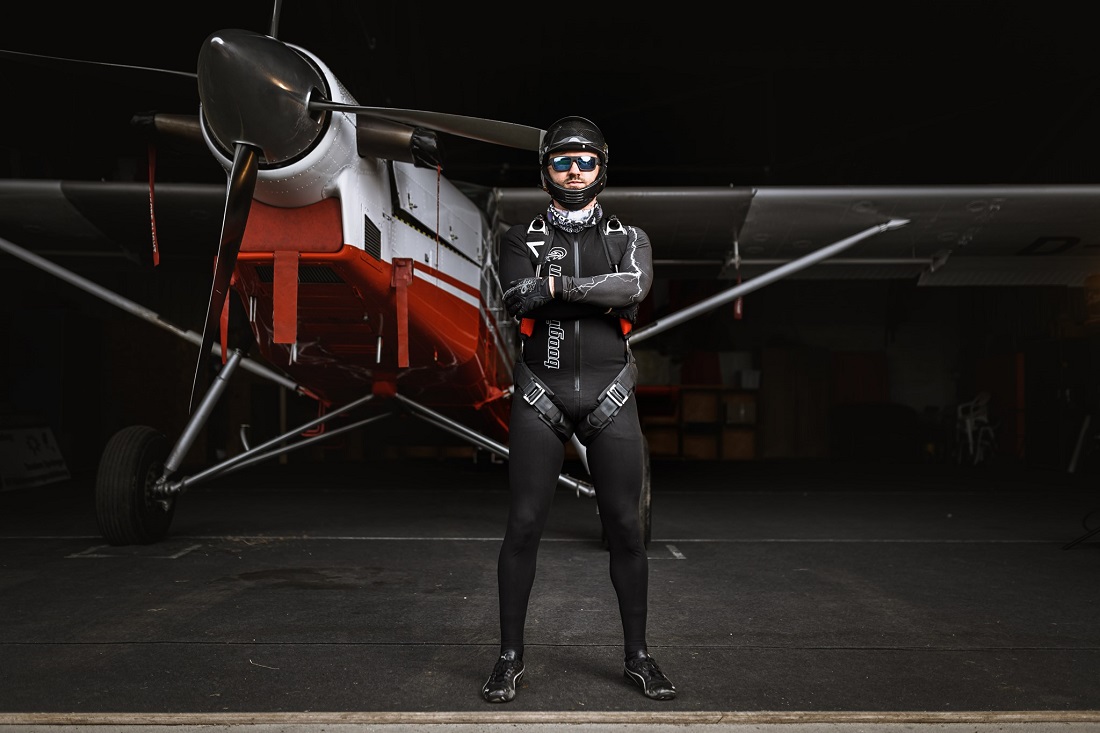Speed skydiving: new research may see athletes reach 600km/h within the decade

The current average speed record for the fastest non-motorised sport – speed skydiving – sits at an awe-inspiring 529.77 km/h. The record is held by German skydiver Marco Hepp, and was set in October 2022, but a new study into the aerodynamics of the sport may mean that humans could freefall at up to an average speed of 600km/h within the next ten years.
A team of aerospace researchers at Germany’s Aachen University of Technology has published the very first research paper on speed skydiving. The paper, entitled, ‘Numerical analysis of the flow around a speed skydiver’ by S. Schölzel, A. Henze and A.-M. Schreyer is a thrilling development for the sport as the team’s findings could aid equipment manufacturers to use the data to create more streamlined gear.
Physicist, skydiver and alternate delegate for the FAI Astronautic Records Commission (ICARE) and FAI General Air Sports Commission (CASI) for Sweden, Narit Pidokrajt, commented, “I am sure that new records in speed skydiving will be made continuously; within this decade we should see 600+ km/h.”
Marco Hepp contributed to the study, being interviewed about the sport and providing images and his own jump data. The main objective of a speed skydiver is to reach the highest possible free-fall speed over a given phase of the jump.
Pidokrajt, who is a Physicist at the University of Borås, Sweden is excited by the research: “It is simply fantastic that this very cool sport attracted the attention of aerospace engineers.” He explains that a skydiver is subject to gravity, which pulls the skydiver towards the ground, and accelerating their journey towards Earth. In a classic belly-to-earth skydiving position, the athlete creates an area of air resistance, and by changing body position, they can reduce this to move around in the air and create formations, flipping and spinning in the air. Indoor skydivers can adopt an upside-down U shape so that extra upward force creates lift. Speed skydivers, in their head-down position aim to minimise the air resistance to travel as fast as possible. This is what the researchers wanted to study.

Study results
Whilst studies have previously been made into standard belly-to-earth position skydiving, this project is the first to analyse speed skydiving, in which the athlete adopts the head-down position. The team from Aachen University of Technology (RWTH), which is well known for aerodynamics and aerospace research, initiated the project by defining the reference conditions and identifying the flow regions which caused most drag.
They discovered that “Several parameters affect the achievable speed, most importantly the skydiver’s mass, body shape, posture and orientation, but also the jumpsuit properties, which all interact with the Earth’s atmosphere to create drag.”
The results found two areas of large-scale separation that strongly contributed to drag: the athlete’s neck, and the rear end of backpack.
In the second stage of the research, the team designed different configurations to change the drag areas, aiming to discover how these modifications affected the results and show how reducing the drag could enhance a skydiver’s performance.
Three modifications were tested:
Backpack: “We applied the principle of boat tailing to decrease the downstream wake region and allow the flow to remain attached.”
Spoiler helmet: This was “designed to shift the separation on the helmet downstream to reduce separation on neck and shoulders.”
Neck brace: “The neck-brace configuration reduces the volume of the re-circulation area by thickening the neck and thus filling in the neck cavity and smoothing the outer contour.”
The team found that these two latter configurations which reduce drag around the skydiver’s neck yielded best results. They concluded that equipment development could take a two-stage approach: firstly, investigating the reduction of drag around the neck, which made biggest impact, then fine-tuning the equipment by reducing the backpack drag.
The team’s findings were consistent with other aerodynamic sports such as swimming, downhill skateboarding, sport cycling and speed ice-skating. It is hoped that the study will be followed up by further research to progress the sport by developing areas for equipment improvement.
- View article by S. Schölzel, A. Henze and A.-M. Schreyer, Numerical analysis of the flow around a speed skydiver, European Journal of Mechanics / B Fluids (2023)

